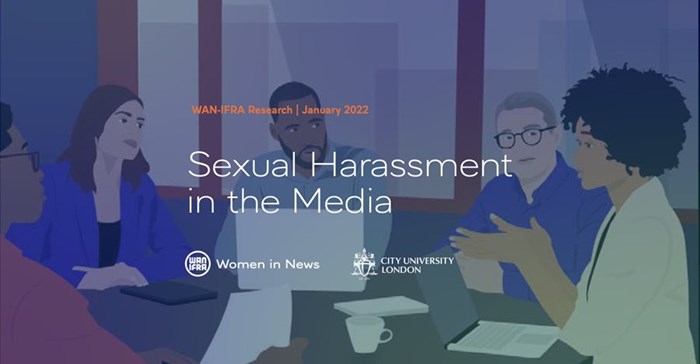
Top stories





HealthcareHIV funding still falls short of targets after pledges: what’s at stake
Melanie Bisnauth 3 hours

More news











The study focuses on men, women and gender non-conforming media professionals in 20 countries throughout Africa, Southeast Asia, Eurasia, the Arab Region and select countries in Central America.
The study, which was carried out from November 2020 to September 2021, surveyed more than 2,000 individuals and included interviews with 85 senior executives.
Results show that, on average, 41% of women media professionals have experienced verbal and/or physical sexual harassment in the workplace. Yet only one in five reported the incident. Though less prevalent, men have not been spared, with an average of 12% experiencing verbal and/or physical harassment. 30% of all media professionals surveyed experienced verbal and/or physical harassment.
“Women and gender non-conforming people are disproportionately affected by sexual harassment in the media sector. While we have known this anecdotally, the findings from this research show that sexual harassment is an endemic problem in the industry - irrespective of geography,” said Melanie Walker, executive director, Women in News at Wan-Ifra. “It is up to the industry to address this problem by being unequivocal in the stance against sexual harassment, and by having the policies and tools in place to manage incidents when they do occur in order to protect their staff, and create a safe environment for all."
80% of sexual harassment cases are unreported. This is largely due to fear - fear of negative impact, fear of losing their job, fear of not being believed, and fear of retaliation. In addition, on average, one in four respondents said they did not report their experience of harassment because their organisation lacked the mechanism to do so and/or they did not know how. Only 11% of respondents reported knowing whether their organisations even had a sexual harassment policy.
Of the few cases that are reported, action is taken by the organisation in only half of the cases and is most commonly limited to warning the perpetrator (41%).
Research numbers also show that experiences of sexual harassment were overwhelmingly perpetrated by fellow employees (39%) or management (19% direct supervisor and 18.9% higher management).
85 executives, including 51 women, from media organisations in the five regions were interviewed as part of the qualitative research. 43.5% acknowledged that they themselves experienced sexual harassment - similar to the findings reported by women media professionals. Yet only 27% of these same executives believe that it is still an issue in the industry.
“It was remarkable to notice the gap in perspective between journalists who participated in the survey and the management of media organisations. This shows that when clear and effective reporting mechanisms are not present, management are unaware of the problem of sexual harassment in their organisations,” said Lindsey Brumell, lead researcher and senior lecturer, City University.
This study builds on research carried out by Women in News in 2018, which identified a lack of available data on sexual harassment in media specifically from countries in these regions. This research is aimed at measuring the scale of the problem and designing responses to end it.
The research is now available online through an interactive site that allows users to break data down by region, country, gender, type of harassment as well as management response. Additional data sets including the type of media, seniority of the respondent, and third party observation of harassment, will be added over the next few weeks. The website is available in nine languages.
“Our aim is to make the data around trends in sexual harassment more accessible and to better inform our media partners about the very real issue of sexual harassment in their newsrooms. For many years we have provided the tools and resources to our partners as part of our training and sensitisation efforts. We believe this data will help our collective effort to establish the mechanisms, and bring about the culture change necessary, to root out sexual harassment for good”, said Walker.
A snapshot of findings in the Arab region, South East Asia, Central America, Africa, and Russia is available here.
Go here for more details.